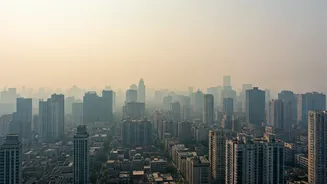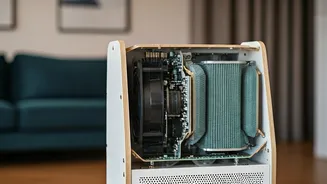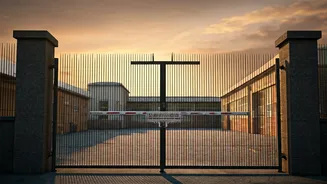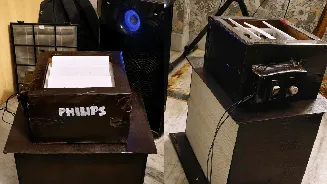Smog's Grim Grip
Delhi finds itself enveloped in a thick layer of smog, a stark reminder of the city's ongoing air quality struggles. The Air Quality Index (AQI) has sharply
climbed, hitting 385, indicating very poor air quality and posing significant health risks to the populace. The smog has intensified, making it difficult to see key landmarks like India Gate. This deterioration in air quality is a pressing concern for the people of Delhi, bringing into focus the necessity of immediate measures. This also raises awareness about the urgency for long-term strategies to mitigate air pollution and protect the health of residents. The current scenario calls for immediate actions to curtail emissions and to safeguard the well-being of the inhabitants of Delhi.
AQI: A Rising Threat
The elevated AQI value is a clear indication of a significant presence of pollutants in the air. A reading of 385 signals that the air is severely polluted. This poses health dangers to everyone, especially vulnerable populations such as children, the elderly, and individuals with respiratory issues. Prolonged exposure to such high levels of pollution can trigger respiratory problems, aggravate pre-existing conditions, and lead to other health complications. The situation underscores the need for people to take precautions, such as limiting outdoor activities and wearing masks. It also stresses the critical importance of government and community initiatives to address the causes of this alarming rise in air pollution and enhance the well-being of the residents of Delhi.
India Gate Obscured
The thick smog has dramatically reduced visibility across Delhi, with iconic landmarks like India Gate barely visible. This reduction in visibility not only impacts daily life but also affects transport and the economy. The obscured view of the India Gate vividly demonstrates the severity of the air pollution. The situation serves as a visible reminder of the immediate effects of poor air quality on the city's environment. The event highlights the need for quick actions, including the restriction of activities that contribute to air pollution and an increased public consciousness about the hazards of breathing polluted air. Furthermore, it underlines the significance of consistent endeavors to tackle the fundamental causes of air pollution for lasting improvements in Delhi's air quality.


















